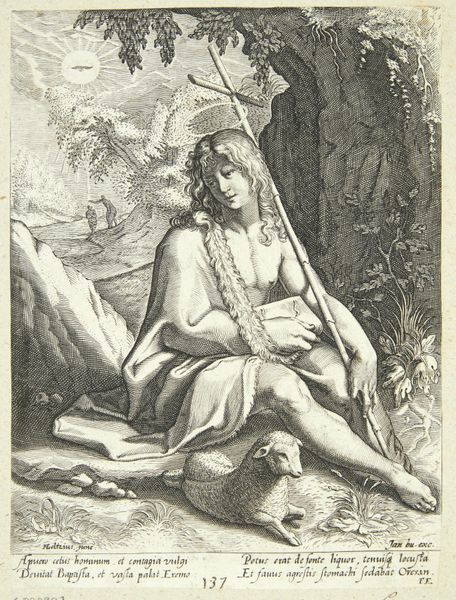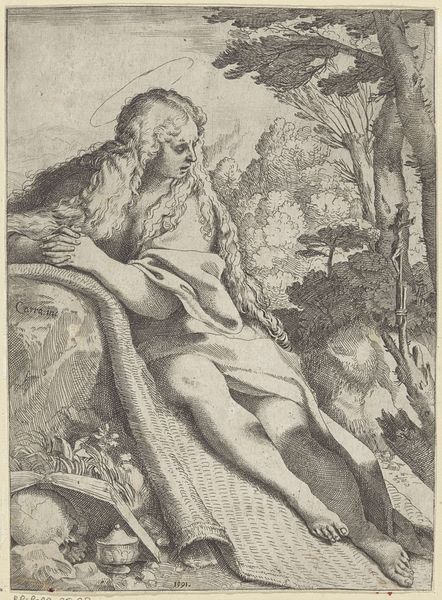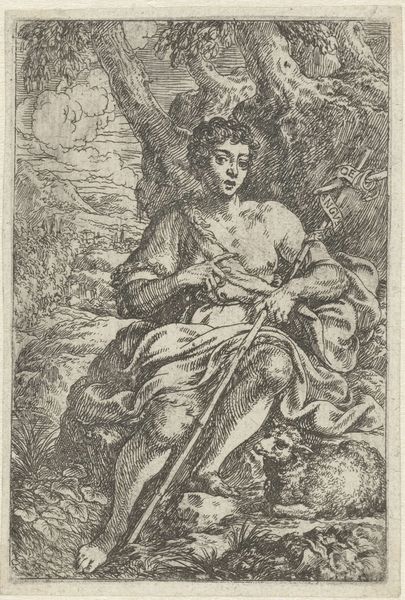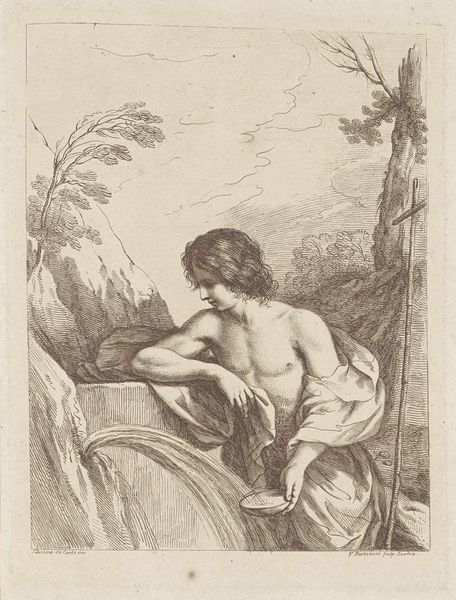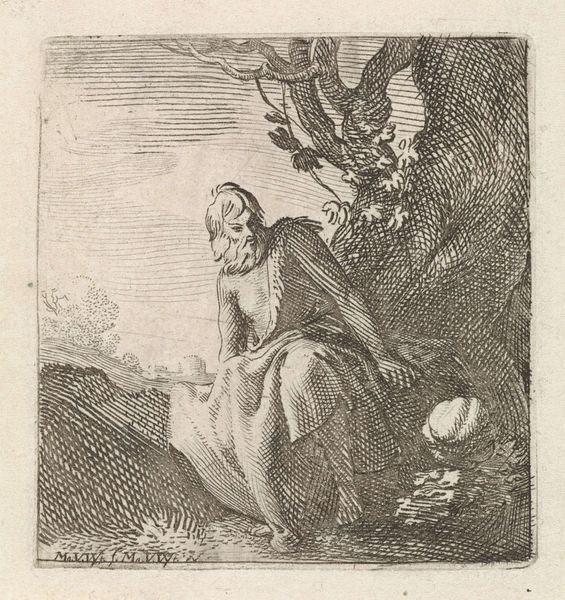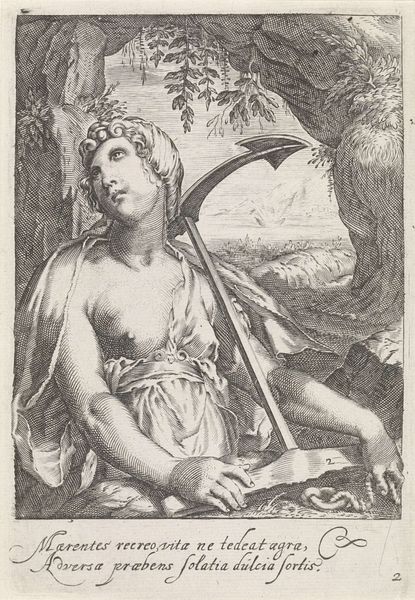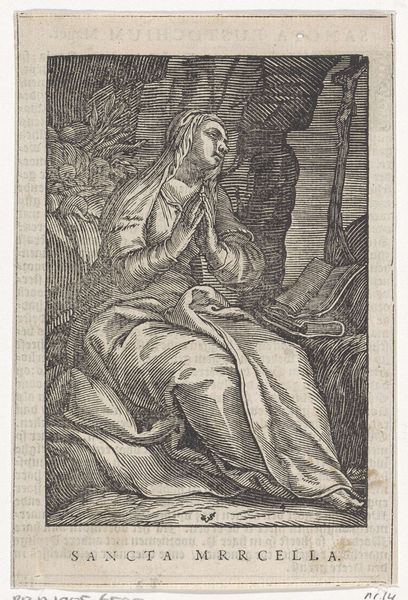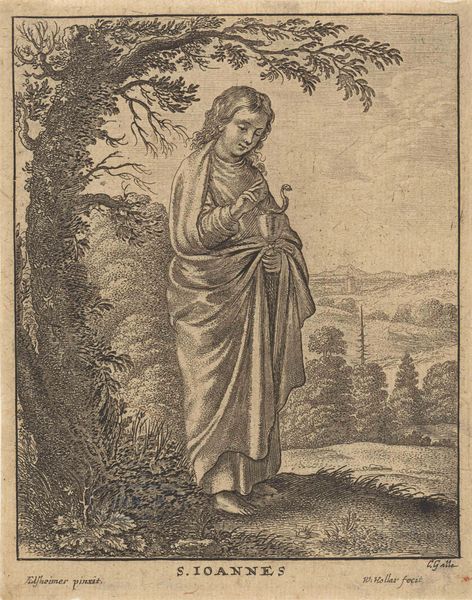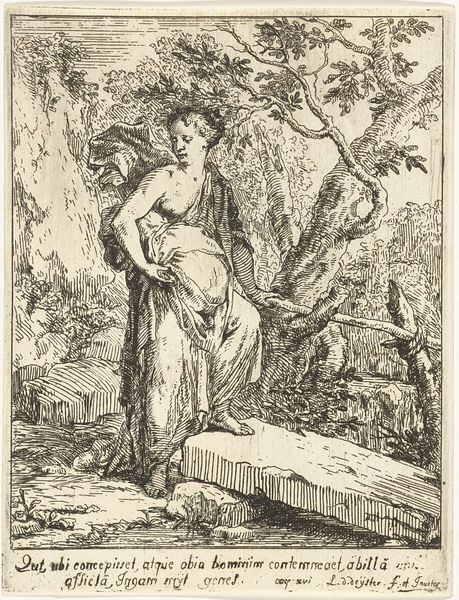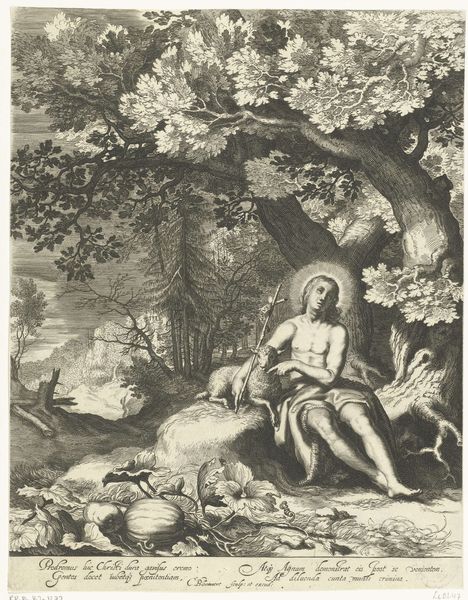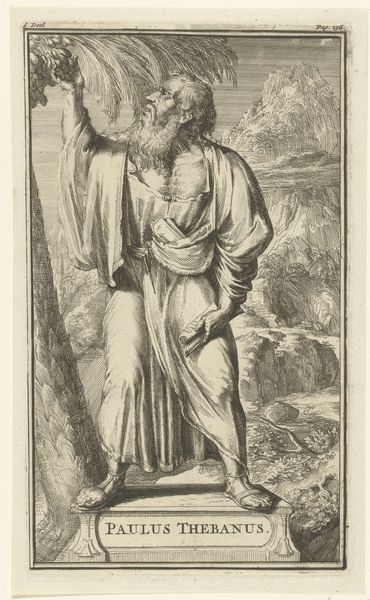
engraving
#
portrait
#
baroque
#
portrait drawing
#
history-painting
#
northern-renaissance
#
engraving
Dimensions: height 206 mm, width 142 mm
Copyright: Rijks Museum: Open Domain
Editor: We’re looking at Hendrick Goltzius’s engraving, *Johannes de Doper*, created between 1588 and 1592. The level of detail achieved in this work using only engraving techniques is remarkable. What aspects of the piece strike you? Curator: What I find most compelling is how Goltzius uses the figure of John the Baptist to explore the role of the artist in society. This print circulated widely, shaping public perceptions of religious figures, particularly during the Counter-Reformation. Consider the pose: pensive, solitary. How does that framing contribute to his overall message? Editor: It does make him seem less a firebrand preacher and more of a contemplative figure, but why represent him as a thoughtful philosopher? Curator: Exactly! He's isolated, almost melancholic, surrounded by the wilderness. This was a politically charged choice. Think about the social role art was meant to play during the period. Art had an obligation to uphold church teaching, and in what context did this obligation exist? Editor: Okay, so this image comes during a time of major religious schism. Does this representation reflect anxieties about the Church's authority? Curator: Precisely! Goltzius might subtly question the dominant interpretations of the Bible by emphasizing personal reflection over public action. See how the landscape becomes more than just a backdrop? Editor: Yes, the detailed yet wild environment sets him apart. Thank you. Curator: My pleasure, the landscape reinforces the complex relationship between the individual and the institutions that surround them.
Comments
No comments
Be the first to comment and join the conversation on the ultimate creative platform.
